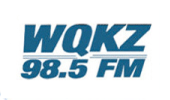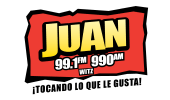Patoka Sportsman 4-11-20
Patoka Sportsman 4-11 & 4-12-20
Indiana State Parks remain OPEN for day use only with entrance fees temporarily suspended. When you visit, please bring and use hand sanitizer, bring your own drinking water, practice social distancing and if you or someone in your household doesn’t feel well, stay home. Read more information about the response of the Indiana Department of Natural Resources, and stay abreast of any system-wide updates and changes, at http://stateparks.IN.gov/7881.htm.
OPEN STATE PARK FACILITIES Include:
- Trails (Foot traffic ONLY)*
- Paved trails for hiking and biking
- Limited non-modern restroom facilities (vault and/or portable toilets)
- Picnic areas (practice social distancing, bring table coverings) - NO shelter use (open air or enclosed) allowed
- Boat ramps (where available)
- Archery ranges (where available)
- Marinas (where available)
CLOSED STATE PARK FACILITIES
- All campgrounds (modern, primitive, equestrian, rent-a-camp, group camps, rally camps)**
- Campground comfort stations and all other modern restrooms
- Equestrian and off-road cycling use of trails
- Playgrounds
- Drinking fountains
- Property offices
- Entrance gates and campground gates
- Nature/education centers and all in-person public and group programs
- Shelter houses
- Group/rally camps and recreation buildings
- Cabins (Family and Rent-a-Camp)
- State Park Inns, restaurants, pools and the aquatic center at Abe Martin Lodge
- Fire towers
- Boat rentals
- Saddle barns
- Camp stores
- Gift shops
- Shooting ranges (where available)
- Fort Golf Course
Outdoor activities, and travel to and from those activities, are currently still permitted. This includes hiking, biking, fishing, and hunting. Hoosiers should practice social distancing while participating in these activities.
- Fish & Wildlife Areas are still open to the public. Find a property near you to visit. Need a place to fish? Check out their Where to Fish map.
Biologists recently began spring fish stocking at locations across the state and will continue to do so. However, some egg collection efforts have been canceled this year. DNR biologists do not anticipate a significant impact to fishing due to canceled egg collections.DNR is striving to ensure the safety of the public and staff. As stocking trucks are on the road and staff are stocking fish, please remember to practice social distancing. For more information on fish stocking, including a trout stocking schedule, visit their website.
The water is open. Indiana residents do not need a fishing license or a trout/salmon stamp to fish the state’s public waters on Free Fishing Days. Take a break from home to get out, toss a line, and catch your own meal. Free Fishing Days are a great opportunity to share the experience with those in your household who might be new to fishing!
Earlier this year, DNR biologists tagged more than 1,000 crappie with a yellow spaghetti tag. Anglers who catch a tagged crappie should remove the tag from all caught fish using a knife or scissors and place each tag in a separate return envelope. Fill out all of the requested information on the outside of the envelope before returning any envelopes to where they were obtained. Return envelopes are located in marked boxes by the boat ramp, with the creel clerk, or at the West Boggs Lake gatehouse.
All 2019-2020 basic hunting, basic fishing, hunt/fish combo, youth licenses and stamps set to expire March 31, 2020, will be valid for use until Friday, May 22, 2020. Please maintain a printed or electronic copy with you while hunting/fishing. If you do not have a valid 2019 – 2020 annual license or stamp, a new 2020 -2021 annual license will be needed. For the upcoming 2020 spring wild turkey season, hunters will need a 2020 spring turkey license and valid gamebird habitat stamp. Licenses can be purchased by visiting the Indiana Fish & Wildlife Online License System, open authorized license vendors, or calling the Indiana DNR Customer Service Center at 877-463-6367, Monday – Friday, 8:30 a.m. – 4 p.m.
Spring turkey season runs from April 22 – May 10. Youth wild turkey season is April 18-19. The season bag limit is one bearded or male turkey per hunter in the youth/spring season. If you’re a turkey hunter interested in taking your child or grandchild out to bag their first bird, this opportunity is perfect for you. Youth age 17 and younger on the date of the hunt can participate, but must be accompanied by an adult who is at least 18 years of age. Youth hunters must possess a valid license to take a wild turkey. Adult partners must also have a Turkey Hunting License and Gamebird Habitat Stamp Privilege if they are participating in the hunt. Looking for a place to hunt? Check out the Where To Hunt map.
Turkey hunting can be an exciting, challenging sport. Hunters should always keep in mind safety while pursuing or calling in gobblers, especially in light of the COVID-19 pandemic. We expect an increase in participation – practicing social distancing, staying well away from other hunters, and never shooting at sound or movement are more important than ever. Wild turkeys may be hunted only from one-half hour before sunrise to sunset. To learn more about DNR properties, to include the 200,000 acres of reservoir properties and state forests. Division of Fish & Wildlife have spring season hunting hours one-half hour before sunrise until noon for properties on CDT and until 1 p.m. for properties on EDT. Call the property for additional information.
Reserved turkey hunt procedures will change on participating Fish & Wildlife Areas (FWAs) for selected turkey hunters this year, as a result of COVID-19. The changes will allow turkey hunting to continue on FWAs while practicing social distancing. Selected turkey hunters (youth-season and regular-season) will be mailed date-specific hunting permit cards for their hunt period as well as a parking permit. FWA offices are closed to the public; however, selected turkey hunters still need to sign in each day at a property self-serve check-in booth before hunting. Hunters must maintain a minimum distance of 6 feet between each other while signing in.
Several FWAs still have open spots later in the turkey season, as not enough hunters applied to fill the available openings. Typically these hunting opportunities are filled by the no-show drawings. Because FWAs will not conduct no-show draws this year, there will be a supplemental online draw for these remaining spots.The supplemental drawing application period will begin Monday, April 6 at 8 a.m. ET and end at 11:59 p.m. on Sunday, April 12. Hunters will be drawn on Monday, April 13, and results will be emailed to applicants. Apply for the supplemental drawing online. Individuals not selected in the pre-season or supplemental draw are also able to hunt on several southern FWAs later in the season, because not all days are reserved. Find a list of those FWAs on on the website.
All wildlife needs food, water, and shelter to thrive. If you are looking for ways to create habitat for wildlife, look no farther than your backyard. While manicured turf grass is common in backyards, it provides little to no habitat for our local wildlife. Although turf grass has its place for many recreational activities, its short roots create a surface that allows pollutants to run off into our water bodies. Luscious lawns require a lot of maintenance (i.e., watering, fertilizing, mowing), which can be a headache, cost a lot of money, and further contribute to pollution. Choosing to grow native grasses, trees, wildflowers, and shrubs can provide year-round habitat for Indiana’s pollinators and other wildlife. Native vegetation provides seeds, nectar, and pollen as food for most of our wildlife. Native plants also supply nesting material for many bird species and offer cover for other wildlife. Landscaping with native plants is generally less maintenance-intensive because they are more resistant to native pests, diseases, and Indiana weather. Their deep roots also slow and filter water runoff, helping to reduce pollutants, such as chemicals and sediment, in our water bodies. Replacing turf grass with native vegetation is a great way to promote clean air, clean water, and healthy soils for both people and wildlife. Learn more about various wildlife habitat practices or contact your district wildlife biologist for advice.
Warming water temperatures in April signal spawning time for many of our fish species. The state endangered Lake Sturgeon is one of the earlier species to spawn in Indiana, migrating, often many miles, to a common spawning site. They deposit their adhesive eggs in areas with large rocks and a fast current. Because of their larger size and habit of surfacing while spawning, it would not be unusual for people to notice them. While it might be tempting to try and catch one, it is important to leave these endangered fish undisturbed during this critical spawning period. It is illegal to take, possess, or harass any of our endangered fish species at any time. If accidentally caught, Lake Sturgeon must be released immediately, unharmed. A list of our state endangered fish species can be found on the dnr website or on page 9 of this year’s Fishing Guide. Information on correctly identifying Lake Sturgeon can be found on page 13. If you think you witnessed Lake Sturgeon spawning activity, please let the DNR know by emailing [email protected].




